The Mechanical Water Clock of Ibn Al-Haytham
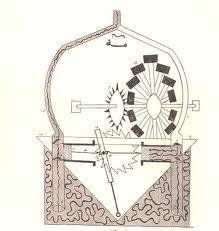
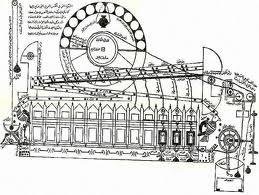
(Discover the golden Age of Muslim Civilisation par. 5)
The first simplest water clock was invented in Egypt about 1500BC. This simplest form of clock was known as the outflow clepsydra; it is shown above from different viewpoints.
The water clock had the shape of a cone that narrowed towards its base. The base had a hole that discharged water that was used to measure time lapse.
The later design of the water clock was the inflow clepsydra. The upper vessel of this water clock had a hole and a constant supply of water with an overflow cylinder.
The cylindrical container received overflow water from the hole in a steady manner that ensured its use in the measuring the time passage. Ctesibius developed the first water clock, an Egyptian Engineer, whose water clock had a cylindrical vessel with a float.
A vertical toothed rod was soldered on the lower vessel, such that, with any rise in water level, the teeth of the vertical rod sent audible signals as it meshes with other gears (Hassan 170). Ibn al-Haytham used a tank with a small opening at its bottom; it helped in showing the time.
Markedly, an inflow clepsydra occurs when the tank sinks into another container with adequate volume of water. The invention of the clepsydra might have occurred in the early parts of the 5th century CE in India; however, the Han dynasty in China adopted the sinking-bowl water clepsydra after Ctesibios era.
This idea of cylindrical vessel with a float was adopted by a number of Muslim Engineers, who replaced the rod with cord attached to the float at the top.
This cord passed through a system of pulleys that activated the visible mechanisms. The design for the control of vessel relied on a famous principle developed by the great scientist, Archimedes.
On the lower outlet of a reservoir, stood a vertical float chamber, with a conical valve on the outlet pipe with a vertically bent down tap. The bottom of the float chamber had a narrow outlet pipe, with the valve plugged on a small float.
In this water clock, whenever, the tap opened, the float chamber received water, thus shortly closing the valve. On the other hand, when water left the float chamber, opening of the valve initiates, and the cycle continues (Hassan 176).
This ensured a steady level of water in the float chamber, resulting into constant speed of the large float as it entered the reservoir (Hassan 177). The float chamber’s outlet discharged into the flow regulator, thus enhancing reading of temporal hours.
This Archimedes clock was however, found to be inaccurate, leading to its modification in Syria, during the Umayyad Times where Ibn al-Haytham, the great scientist constructed a modified mechanical water clock.
Ibn Alhaytham developed the mechanical water clock based on Al-Jazari’s installation design of water clock that used the automata to indicate time lapse. The automata were activated hourly using mechanical birds that released pellets onto the Cymbals using their beaks.
The water clock also used doors that rotated to reveal humanoid robots an as well as varied colours, zodiac circles that contained symbols of moon and the sun in relation to the time of the day as it rotated in a steady manner.
The mechanical water clock also had semi-circular glass discs that were illuminated hourly (Hassan 180).
Ibn Khaldun and the rise and fall of empires
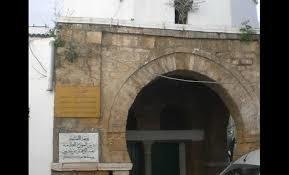
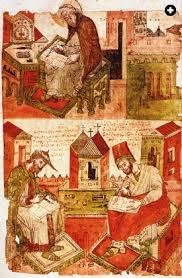
(Discover the golden Age of Muslim Civilisation par. 5)
The first picture shows the entry to the traditional empires. Ibn Khaldun was a renowned Muslim thinker in economics and social theories. His most substantial activity was the Kitab al- ‘Ibar’s section of Muqaddimah that analysed the rise and fall of the Ottoman Empire.
The works of Ibn Khaldun were done at a time when the political elite were very wary and strict with people who expressed independent thoughts.
His works was, therefore, noteworthy because it was original in both its organisation and content. His works led to the development of theories of social cooperation and collective solidarity under his infamous Arabic term ‘asabiyyah’ (Alhaytham par. 5).
Ibn Khaldun was privy to the fact that it is difficult to establish a progressive social order if the members of the society are simply egoistic sensible representatives.
He therefore, decided to devote his literary work to come up with a theory that focused on the enhancement of ‘asabiya’ or social cooperation, and factors that are responsible for the fall of social cooperation in our society (Alhaytham par. 8).
Ibn Khaldun philosophy on the rise and fall of empires and states is applicable to the real world situation, especially on the business front. The rise and fall of business organisations or firms, for example the fall and rise of Microsoft Corporation as postulated y Paul Krugman.
It is imperative to note that corporations, just like states, are cooperative enterprises. You realise that business owners like the corporate managers, just as selfish interests normally drive the political elites (Alhaytham par. 3).
Ibn Khaldun’s book thus focused on the sedentary mode of culture as opposed to the primitive culture where one only desired to satisfy his or her own immediate needs at the expense of the rest of the society.
He postulates that the decline of regimes is because the surplus produces in most societies ends up in the luxuries of the few elites. He puts it clear that the luxuries informed the degeneration and decline of major regimes in the world.
Ibn Khaldun’s works on the rise and fall of states focuses on the establishment phase, which relies on the solidarity of the supporters (family or religion). This solidarity enhances the state’s preservation where the ruler tends to serve the interests of his or her people (Alhaytham par. 9).
The second phase of the cycle is the monopolisation of power stage, where the ruler views him or herself as an immovable master. At this point, the ruler breaks ties with people who helped him or her ascend to power. He or she makes new friends who are bureaucrats like him/her.
The third phase is the leisure and luxury stage, where the ruler now seeks to satisfy his private needs at the expense of the wider society.
The fourth stage is the characterised by feeling of long lasting rule. This forth stage is the one that determines the survival of the state, as the society is already discontented with the rule, hence disintegration of the state.
The ruler has purchased support of the military and the bureaucrats disintegrate, thus resulting into the collapse of the state (Alhaytham par. 8).
Introduction to the Islamic Traditional Chemistry
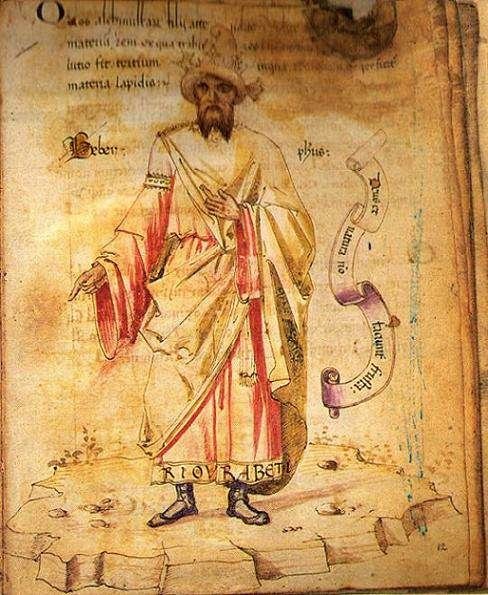
(Gardenour par. 1)
The picture above shows the cover of early chemists – Geber. The old Islamic chemistry also known as ‘alchemy’ was influenced by traditional philosophy that relied on the chemical inquiry of natural surroundings by the medieval Islamic intellectuals based on Muhammad’s personal capabilities.
This traditional chemistry developed after the fall of the Roman Empire, thus the traditional Islamic chemistry was based on the works of past alchemical scholars from Greek and Egypt during the Abbasid period (Gardenour par. 1).
The Islamic chemistry caused various scientific findings and cultural advancements in the world. The traditional Islamic chemistry led to the advancement in the fields of philosophy, arts, literature, and science. The alchemy relied heavily on mystical powers.
It is therefore, imperative to note that the Islamic alchemists constructed their theories based on magical nature as opposed to relating them to matter and elements, however, these works served both matter and elements (Rahim par. 9).
The alchemist work involved a lot of laboratory work involving use of dangerous chemical at times. “Master Elixir” or the Philosophers Stone was an early Islamic traditional chemistry (alchemy) that was believed to purify one’s soul and body.
It was believed to possess mystical powers to decompose all matter, just the same manner, universal acid does. The metal was later believed to harbour mystical power to convert basic metals into gold or other precious metals. This Philosopher’s stone took the form of liquid, powder, or gel (Thompson 25).
The Islamist alchemists’ studied alchemy from the inquiries of Greek alchemists during the rule of Abbasid Empire; the study was aimed at developing philosophy, mathematics, as well as medicine.
This is reason as to why the Egyptians accorded gold superiority in terms of soul with respect to other metals’ souls, which could improve the soul of other base metals if mixed in slight quantities (Rahim par. 20).
A renowned Islamist alchemist, Jabir b. Hayyan, who is also known as ‘Geber the Wise,’ was the first to carry out a controlled alchemical experiment in a laboratory. He later on wrote a number of books about alchemy.
His works got the attention of the Western world; they got the idea of the Elixir of Life through his works. His works were based in his belief on transformation of metals from one state to another, as well as transmutation (Gardenour par. 4).
The Islamic traditional chemistry made substantial inputs to improvement of techniques in chemistry, as well as unplanned innovations. It is imperative to note that Jabir, discovered nitric acid, sulphuric acid and aqua regia.
Based on his works, the German scientist, Henning Brandt, believed that his urine was the Philosopher’s stone. He went on to discover the metal after steaming the urine. It is important to note that the phosphorus today makes the ingredients of rocket fuel and toothpaste (Thompson 26).
Scientists moved swiftly to prevent experimental and scientific chemistry from becoming a Muslim science; laboratory practical helps in changing one matter from a given state to another state and another product as well.
Experimentation remained the task of Muslims only; the Greeks, on the other hand, stood up for metaphysical analysis and theories on chemical procedures. Al-Razi became to be known as the father of modern chemistry through his numerous experimentation to support the Greek’s theoretical information.
Four Medieval Hospitals in Syria
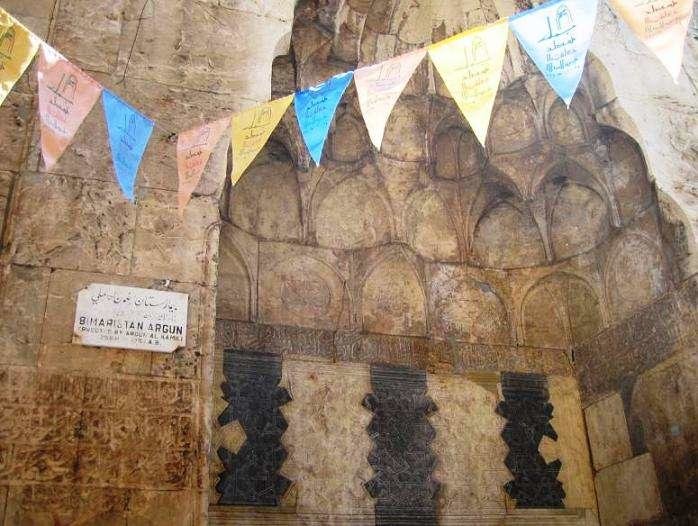
(Discover the golden Age of Muslim Civilisation par. 7)
The picture above shows the entry to Arghun Al-Kamili hospital in Damascus. Notably, Damascus and Aleppo are the homes of the four hospitals. The early Islamic era saw the creation of health institutions to serve the ill people. In Aleppo, there is the Nuri hospital that was named after Nur al-Din Zangi (1117-1173).
This city comes after Damascus in terms of size; it lies in northern part of Syria. Aleppo remains the capital of Islamic culture; it marked this in 2006. The vast number of archaeological sites in Aleppo attracted several tourists who had great interest in archaeology and history.
The city also acted as a major trade route, which connected the Roman Empire and Egypt. After witnessing how Aleppo was a major business hub at the time, Nur al-Din Zangi applied his philanthropist nature to support the poor by building the magnificent hospital.
He used to spend much of his finances in supporting the poor in the society. He went ahead to construct the hospital between 1148 and 1155; the hospital was located next to another magnificent project that Nur al-Din Zangi has sponsored – intramural water project.
Nur al-Din Zangi was so determined to ensure the hospital meets its objective of serving the poor; the building was reconstructed numerous times after damages by earthquakes. A structure of complex stone curving is visible above the door of Nuri hospital, as well as Arabic calligraphies on different stones.
Such Arabic calligraphies are common in all the health facilities. These features are visible and intact to the present day. The hospital of Arghun Al-Kamili is the second medieval health facility in the city of Aleppo. Mamluk governor, Arghun Al-Kamili, supported the construction of the institution in 1354.
The facility was mainly made of stones; the entrance to the hospital an up-to-date wrought iron fence – Qinnesreen. Decorations of intricate stones filled the institution, together with Arabic and English writings indicating its name and date.
Arghun Al-Kamili hospital had a wooden door with copper metals, which displayed geometrical Arabic designs. At the top of the door, there are four lines of writings in Arabic. After leaving the metallic door, there is the hospital dispensary and a small room; the additional rooms were for consultation services.
Damascus, on the other hand, hosts the Nuri and Qaymari hospitals. Numerous scholars have frequently not mentioned the latter institution due to its non-strategic location.
The health facility is situated in the interior of vegetable market full of hogwash and garbage emanating from the indigenous merchants; this might be the reason for its negligence.
Qaymari hospital was constructed in 1248; it has a modern marble on the right part to indicate that it was constructed in the 12th century.
The interior part of the Qaymari hospital has a quadrangular water reservoir bounded by iwans. Iwans are four arched halls. So special was the health facility that it set aside one of its sections for the sick females. River Nahr Yazid was the main water supplier to the Qaymari hospital.
Nuri al-Din Zangi went further to establish another hospital in his name in Damascus, the largest city in Syria (Discover the golden Age of Muslim Civilisation par. 7).
The construction of Nuri hospital in Damascus began in 1154 and stopped in 1242. Seljuk style is evident at the entrance of the health facility. Copper and geometrical designs are evident on different points of the structure.
Figures of painted flower motifs, peacocks, and calligraphy are visible from the inside of the facility. A central fountain is located at the courtyard; the courtyard is bounded by numerous rooms. One of the rooms was a library.
The Instrument of Istanbul Observatory
Taqî al-Dîn al-Râsid, with the funding of Sultan Murad III, founded an Istanbul Observatory 400 ages back. Istanbul Observatory is located on the European side of Bosporous, and is one of the largest observatories established before 16th century.
The Istanbul Observatory is comparable to other observatory like Nâsir al-Dîn Tûsî’s Maragha observatory, Ulug Bey’s Samarqand observatory and Tycho Brahe’s Uroniborg observatory (Discover the golden Age of Muslim Civilisation par. 12).
The three key significance of an observatory is influenced by the value of the astronomers associated with the observatory, the gracefulness of the observatory and the type of work done in the observatory. Most observatories have devices that are categorised into movable and static instruments.
Nevertheless, according to Taqî al-Dîn, the observable instruments found in Istanbul Observatory are fixed instruments. Tycho Brahe surpassed both Ptolemy and Taqî al-Dîn in the instrumentation field.
From the field of construction and observation with the aid of different instruments or devices, it is imperative to note that Tycho Brahe was one of the great Muslims who developed astronomical instruments hospitals (Discover the golden Age of Muslim Civilisation par. 14).
Fixed instruments found in Istanbul Observatory
An armillary sphere
The Armillary Sphere is an astronomical instrument used to measure the position of celestial objects. It has three sets of rings. The extreme ring is referred to as the Liuheyi that has the Fixed Equatorial, Horizon, and Meridian Circle fused together firmly on a subsidiary structure.
The intermediate one is the Sanchenyi and has four components (Discover the golden Age of Muslim Civilisation par. 17). The Siyouyi is the interior set that revolves inside the Sanchenyi about the glacial alignment.
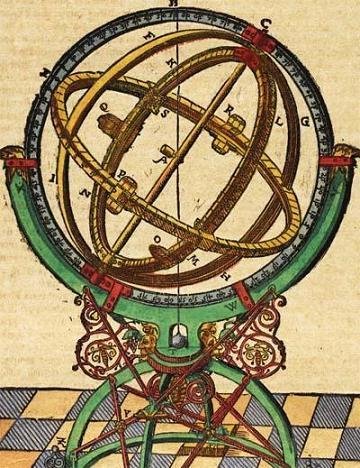
Armillary sphere of Tycho Brahe
A mural quadrant (Libna)
Astronomers used a fresco quadrant, which astronauts use to observe the ascension of the stars and the sun; it measured angles of between 0-90 degrees.
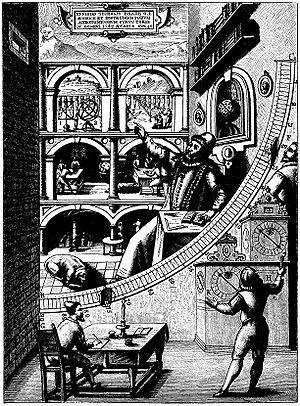
Mural quadrant of Tycho Brahe (Discover the golden Age of Muslim Civilisation par. 14)
An azimuthal semicircle
The azimuthal is a device used to measure the stars’ azimuths and elevations. They had a copper ring that signified the horizon and a semi-circle that was at right angles to the horizon (Discover the golden Age of Muslim Civilisation par. 10).
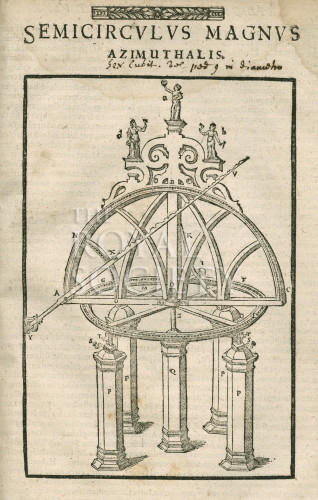
Azimuthal semicircle
Parallactic Rule
This instrument was used to measure the moon’s parallax. It has three pieces of wood where the first piece is at right angles to the horizon, the second piece is connected at one end of the first piece while the third one is nailed near the base using a chord (Discover the golden Age of Muslim Civilisation par. 8).
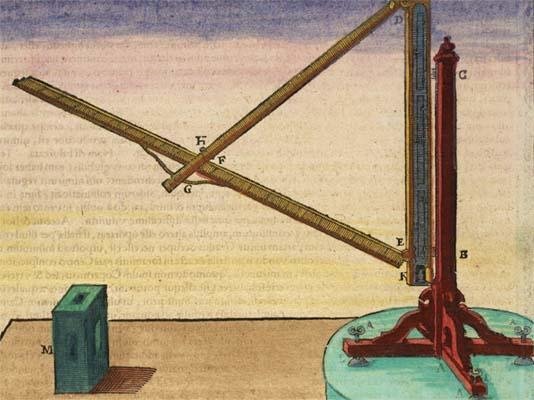
Parallactic instrument of Tycho Brahe
(Discover the golden Age of Muslim Civilisation par 15)
The wooden quadrant
Astronomers do not only measure distance of the sun to zenith, but also ascertain the stars’ elevations using this gadget. It is made up of wooden rulers and forms a quarter of a full circle.
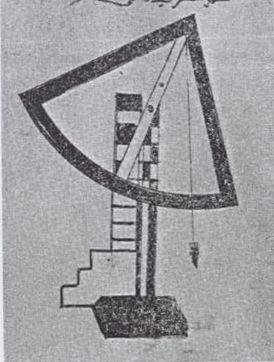
The wooden quadrant
Dioptra
Dioptra is an apparatus used to measure deceptive breadths of eclipses and heavenly bodies, such as comets and meteorites.
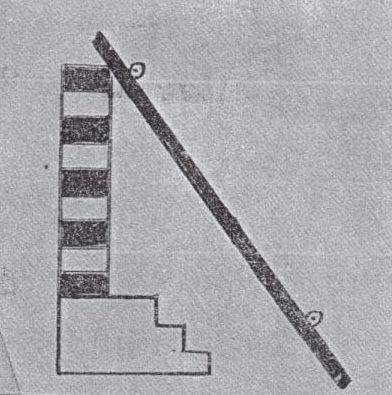
Dioptra
The instrument with cords
This instrument measures equinoxes of fall and spring.
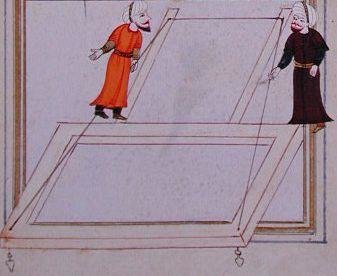
The instrument with cords
Sextant
This device or gadget helps in measuring the gap between stars.
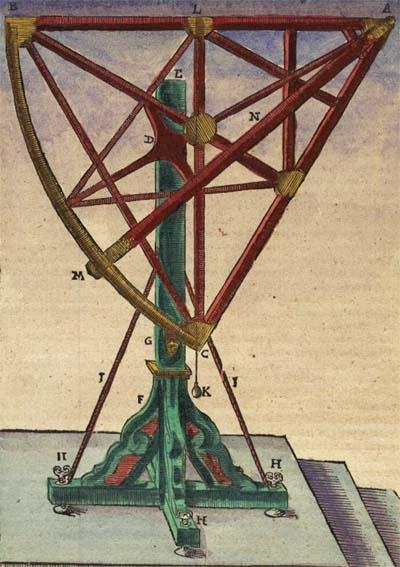
Sextant of Tycho Brahe (Discover the golden Age of Muslim Civilisation par. 18)
Works Cited
Alhaytham, Ibn. Scientists and Discovery Series. N.p., n.d. Web.
Discover the golden Age of Muslim Civilisation. N.p., 5 Oct. 2005. Web.
Gardenour, Brenda S. The Development And Diffusion Of Alchemy From Antiquity To The Renaissance. N.p., 18 Nov. 2003. Web.
Hassan, Aref. Technology and Applied Sciences. Paris: Unesco Publ, 2001. Print.
Rahim, Habibeh. Alchemy: Islamic Alchemy. N.p., 4 Dec. 2005. Web.
Thompson, Charles John Samuel. Alchemy and alchemists. Mineola, N.Y.: Dover Publications, 2002. Print.